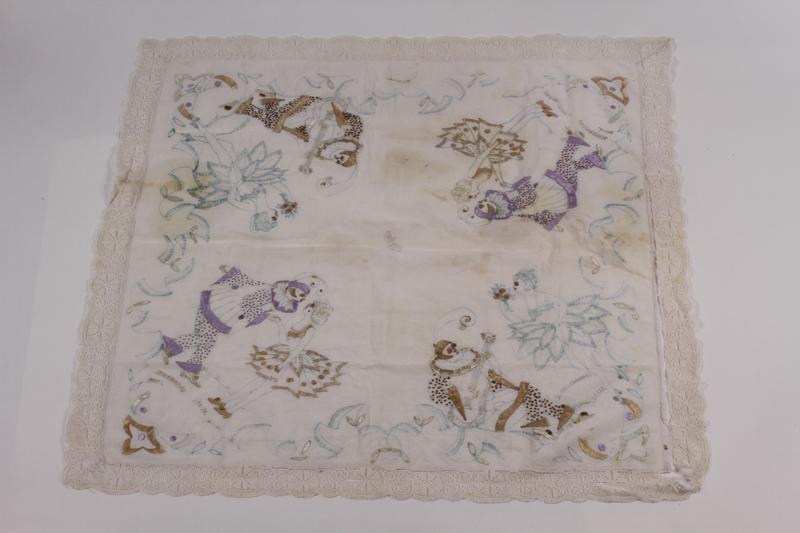Salomea Fejnman was born on January 17, 1908, in Warsaw, Poland. Her mother was Frimet Fejnman. Salomea had eight sisters. She married Zelik Poler, who was born on October 19, 1908, in Warsaw. Zelik had one brother and two sisters. Salomea and Zelik lived in Belgium, first in Forest, then in Anderlecht in Brussels. Zelik’s family also lived in Belgium, while Salomea’s family remained in Warsaw. Zelik was a leather manufacturer. Salomea helped with Zelik’s business and worked as a seamstress. The couple had five children: Fanny, born November 5, 1930, Rosette, born February 8, 1932, Abraham, born November 4, 1933, Jeannine, born June 6, 1936, and Lilia, born July 7, 1938. Zelik’s parents were religious and the family celebrated Jewish holidays. In 1938 or 1939, Zelik left Poland for Venezuela with his brother and brother-in-law. He did not contact Salomea again and did not send her money. Salomea worked as a seamstress to support her children, but struggled financially.
Germany invaded Belgium on May 10, 1940. The Convent of les Soeurs du Saint Saveur, a block away from Salomea’s home, provided aid to impoverished people in the area. When Lilia became ill, the nuns visited and brought her medicine and a doll. They offered to hide Lilia in the convent. Salomea agreed, but only if they would hide all of her children. When the Germans began rounding up Jews, Salomea brought her children to the convent. Abraham was sent to live with the priests and Fanny, Rosette, Jeannine, and Lilia stayed in the convent. The children used the false name Polet. Abraham was called Albert, and Lilia was called Lilian. Salomea was able to visit her children occasionally, but it became too dangerous and the nuns decided to stop letting her in. Salomea climbed up a ladder and scaled the roof, trying to get inside, but she was caught. She was arrested and sent to Mechelen (Malines) transit camp. On September 26, 1942, Salomea was deported to Auschwitz-Birkenau concentration camp on Transport XI. She was killed in the gas chambers upon arrival on September 28.
Salomea’s daughters remained in the convent. They took classes in spelling and counting. The girls were baptized and learned Catholic prayers. Lilia was very close to the Mother Superior, who spoiled her. Abraham came to the convent daily to pick up food that the nuns made for the priests. On his way there, he heard someone say that something was going to happen. Jeannine and Lilia saw Gestapo officers and a man called Gros Jacques in the convent, talking to the Mother Superior. They were there to take all fifteen hidden Jewish children, and were told to come back the next day. The resistance heard about the incident and came in the middle of the night, pretending to be Germans. They tied up the nuns, cut the phone lines, and vandalized the convent, making it look like a German raid. They took the children to another hiding place for the night. The next day, the sisters were separated and taken to new hiding places. Fanny went to stay with their paternal grandparents, who were hiding in a hospital. Rosette, Jeannine, and Lilia were moved between several different convents and homes in Belgium, including Machelen and Uccle. The sisters were mistreated in several of the hiding places. Allied forces liberated Belgium in September 1944. The Poler children were reunited and lived in Jewish orphanages in Antwerp and Brussels. They resumed contact with their paternal grandparents. Salomea’s eight sisters, and presumably their families, all perished in the Holocaust. In 1946, Zelik returned to Belgium for his children. He took Fanny and Abraham back to Venezuela with him. Rosette, Jeanine and Lilia remained in Belgium until 1949, when they immigrated to Venezuela. Abraham changed his name to Alberto and Lilia to Lilian. Fanny and Alberto settled in Venezuela, Jeannine in Curacao, and Lilian and Rosette in the United States. Salomea’s husband Zelik, age 73, died on April 20, 1982, in Dade, Florida. Her son Alberto died in 1992.




